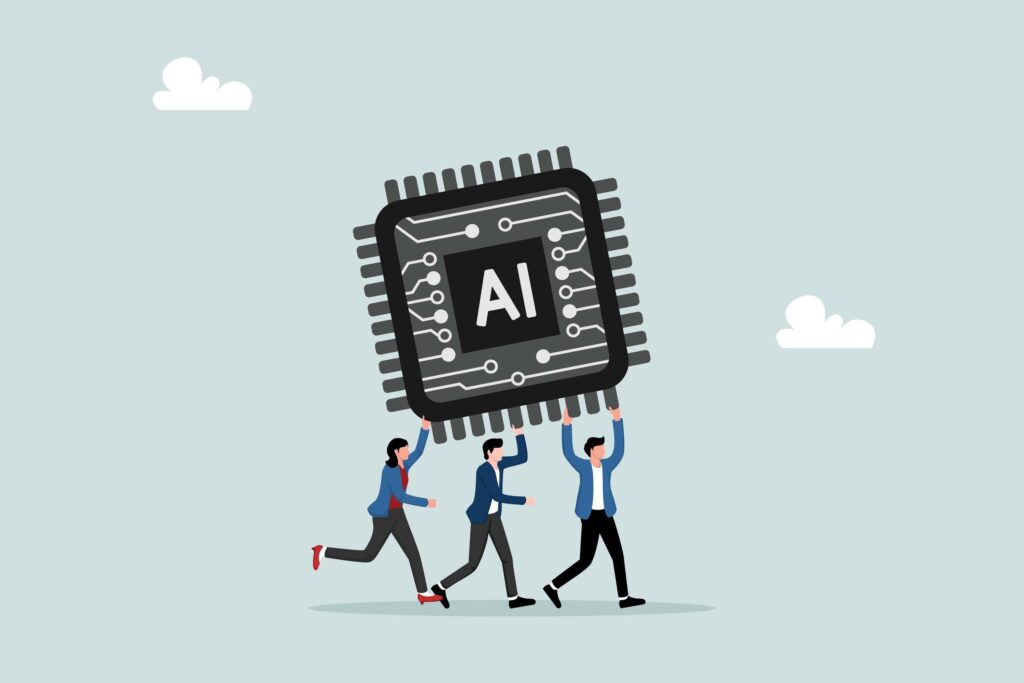Adaptability and change are core ingredients to organizational success. To put it bluntly, if you can’t change and change rapidly, you can’t survive. (At least not for long.) In today’s world, the ability to change is required for business and personal success. Between shifts in laws, culture, competition, and weather, being able to adjust and make rapid change is the difference between failure and success for organizations. An organization’s ability to change effectively is directly linked to five essential capabilities in business.

A New Perspective on Organizational Capabilities
One of the most common ways to develop a capability model is to look at an organization’s functions and uncover the capabilities behind those functions. This leads to capability models that are tightly related to functions and organizational design. Many organizations have an organizational unit responsible for change, such as Organizational Development, but most don’t.
So where are the capabilities for change located? Everywhere. They are distributed across the entire organization. These capabilities are not intuitively obvious and are often missing from many organizations’ capability models. Here are five essential change capabilities every organization can focus on cultivating or improving.
Leadership
We often think of leadership as a set of people at the top of the organization, but it is a capability that can and should exist at every level. Leadership is the capability to inspire and motivate people to fulfill a mission. At the top of the organization, leadership includes directing others; at lower levels, it is accomplished through influencing others. Your company’s leadership performance has a lot to do with how much the organization can change in a given amount of time. Trust is a vital part of effective leadership; when an organization’s employees trust leadership, they are more likely to respond effectively when leadership makes changes.
Collaboration
Collaboration is the ability to work productively with others. At the low end of the performance, collaboration provides the ability to effectively break down complex tasks and distribute the parts across a group of people or organizations. At higher performance levels, collaboration creates organizational harmony, producing a performance boost where the whole is greater than the sum of its parts. Some organizations might require a higher degree of collaboration than others, but every organization needs to collaborate to drive change. Modeling collaboration from the top down is an effective method for improving your organization’s skills in this area.
Adaptability
In our history, adaptability has never been as critical as it is now. Products, services, organizations, companies, and even whole industries come and go in a heartbeat. Adaptability is an organization’s ability to give up the existing skills, processes, and technologies that have led to its past success and create new skills and approaches that ensure success for tomorrow. Organizations must be highly adaptable to survive if they expect to drive change and thrive. Adaptability requires humility and practicality; ego and perfectionism are the enemies of this capability.
Creativity
The problems we face today are much more complex and time-critical than those of the past. They often cannot be solved by brute force alone. Creativity describes an organization’s ability to think differently and allow different thinking to influence day-to-day and strategic decisions. At the low end of the performance curve, organizations can be trapped in tradition and best practices, unable to solve persistent problems. At the high end, they are often challenged to prioritize and choose from numerous new ideas. While all these capabilities work together, creativity is primarily supported by leadership, collaboration, and adaptability.
Innovation
Innovation goes beyond creativity to turn creative ideas into reality. It is the ability to translate a good concept into a compelling value proposition in which others are willing to support and invest. When innovation ability is high, companies go beyond innovative products to design innovative processes, organizational structures, management practices, and employment engagement approaches.
The Bottom Line
These five capabilities permeate the entire organization and every individual. Functional units can be established to act as centers of excellence that support and encourage the development of these capabilities, but that is not where the value resides. Every organization member can manifest these essential capabilities, driving change and building a high-performance organization.
Transform with Accelare
At Accelare, we know what it takes to improve business capabilities like leadership and adaptability. We have years of experience working with organizations like yours to cultivate and enhance these five essential business capabilities. Aligning whole organizations is something that we achieve daily as we work with our clients to transform digitally. If you have questions or are ready to get started, please reach out to Accelare today.











